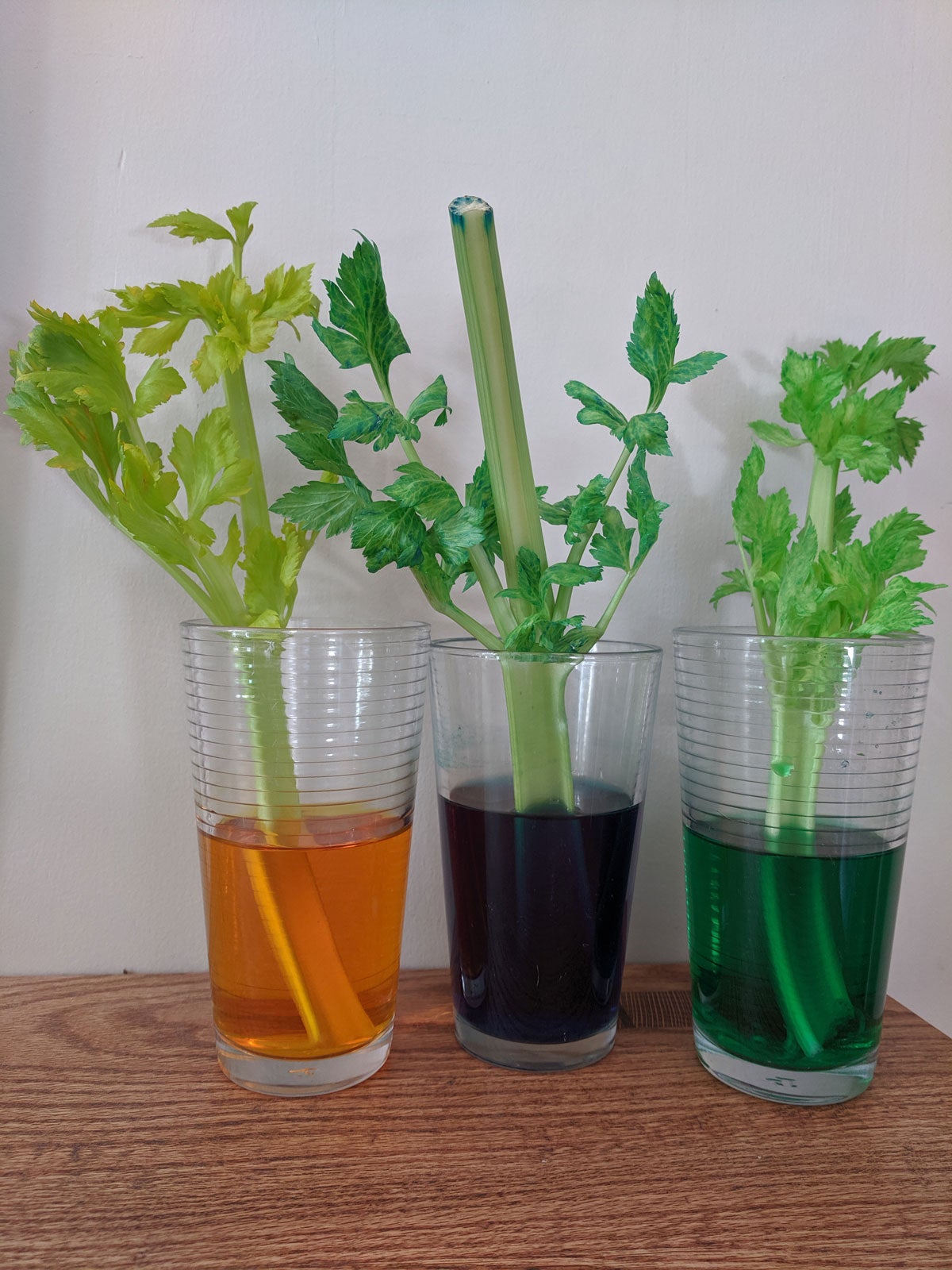Color Changing Celery: Fun Celery Dye Experiment For Kids


It is never too early to get kids interested in plants and the ways Mother Nature has equipped them to survive. Even young tots can grasp complex concepts, like osmosis, if you create experiments that hold their attention. Here’s one to get you started: the great celery dye experiment.
This is a great family project that involves celery sticks that turn colors as they absorb colored water. Read on for instructions on how to dye celery.
Celery Dye Experiment
Kids know that garden plants don’t eat or drink like people do. An explanation of osmosis – the process by which plants uptake water and nutrients – can quickly become too confusing for young children though.
By engaging your younger kids, even toddlers, in the celery dye experiment, they will get to see plants drinking instead of hearing an explanation of it. Since changing the color of celery is fun, the entire experiment should be an adventure.
How to Dye Celery
You don’t need much to get this color changing celery project underway. In addition to celery, you’ll need a few clear glass jars or cups, water, and food coloring.
Explain to your children that they are about to do an experiment to see how plants drink. Then have them line up the glass jars or cups on the kitchen counter or table and fill each one with about 8 ounces of water. Let them put three or four drops of one shade of the food coloring into each cup.
Separate the celery packet into stalks with leaves, cutting a little off the bottom of each stalk. Pull out lighter, leafier stalks from the center of the bunch and have your kids put several in each jar, stirring up the water and blending in the food coloring drops.
Sign up for the Gardening Know How newsletter today and receive a free copy of our e-book "How to Grow Delicious Tomatoes".
Have your children guess what might happen and write down their predictions. Let them check on the color changing celery after 20 minutes. They should see the dye color in little dots in the tops of the stalks. Rip open one piece of celery of each color to trace from the inside how water is mounting.
Check again after 24 hours. Which colors spread best? Let your kids vote on the prediction that came to closest to what happened.

Teo Spengler is a master gardener and a docent at the San Francisco Botanical Garden, where she hosts public tours. She has studied horticulture and written about nature, trees, plants, and gardening for more than two decades, following a career as an attorney and legal writer. Her extended family includes some 30 houseplants and hundreds of outdoor plants, including 250 trees, which are her main passion. Spengler currently splits her life between San Francisco and the French Basque Country, though she was raised in Alaska, giving her experience of gardening in a range of climates.